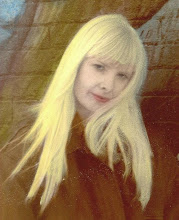
Tommy Dorsey, Jr. (November 19, 1905 – November 26, 1956)
Thomas Francis "Tommy" Dorsey, Jr. (November 19, 1905 – November 26, 1956) was an American jazz trombonist, trumpeter, composer, and bandleader of the Big Band era. He was known as "The Sentimental Gentleman of Swing", due to his smooth-toned trombone playing. He was the younger brother of bandleader Jimmy Dorsey. After Dorsey broke with his brother in the mid-1930s, he led an extremely popular band from the late '30s into the 1950s. Dorsey had a reputation for being a perfectionist. He was volatile and also known to hire and fire (and sometimes rehire) musicians based on his mood.
Tommy Dorsey's first band was formed out of the remains of the Joe Haymes band. The new band was popular from almost the moment it signed with RCA Victor with "On Treasure Island", the first of four hits for the new band in 1935. The Dorsey band had a national radio presence in 1936 first from Dallas and then from Los Angeles. Tommy Dorsey and his Orchestra took over comedian Jack Pearl's radio show in 1937.
By 1939, Dorsey was aware of criticism that his band lacked a jazz feeling. He hired arranger Sy Oliver away from the Jimmie Lunceford band. Sy Oliver's arrangements include "On The Sunny Side of the Street" and "T.D.'s Boogie Woogie"; Oliver also composed two of the new band's signature instrumentals, "Well, Git It" and "Opus One." In 1940, Dorsey hired singer Frank Sinatra from bandleader Harry James. Frank Sinatra made eighty recordings from 1940 to 1942 with the Dorsey band. Two of those eighty songs are "In The Blue of Evening" and "This Love of Mine". Frank Sinatra achieved his first great success as a vocalist in the Dorsey band and claimed he learned breath control from watching Dorsey play trombone. In turn Dorsey said his trombone style was heavily influenced by that of Jack Teagarden. Among Dorsey's staff of arrangers was Axel Stordahl who arranged for Frank Sinatra in his Columbia and Capitol records years. Another member of the Dorsey band was trombonist Nelson Riddle, who later had a partnership as one of Sinatra's arrangers and conductors in the 1950s and afterwards. Another noted Dorsey arranger, who in the 1950s, married and was professionally associated with Dorsey veteran Jo Stafford, was Paul Weston. Bill Finegan, an arranger who left Glenn Miller's civilian band, arranged for the Tommy Dorsey band from 1942 to 1950.Dorsey branched out in the mid-1940s and owned two music publishing companies, Sun and Embassy. After opening at the Los Angeles ballroom, The Hollywood Palladium on the Palladium's first night, Dorsey's relations with the ballroom soured and he opened a competing ballroom, The Casino Gardens circa 1944. Dorsey also owned for a short time a trade magazine called The Bandstand. Dorsey was also part owner of the Bob Chester band in 1940. He was also an early investor in Glenn Miller's second successful band of 1938.
Tommy Dorsey disbanded the orchestra at the end of 1946. Dorsey might have broken up his own band permanently following World War II, as many big bands did due to the shift in music economics following the war, but Tommy Dorsey's album for RCA, "All Time Hits" placed in the top ten records in February, 1947. In addition, "How Are Things In Glocca Morra?" a single recorded by Dorsey became a top ten hit in March, 1947. Both of these successes made it possible for Dorsey to re-organize a big band in early 1947. The Dorsey brothers were also reconciling. The biographical film of 1947, The Fabulous Dorseys describes sketchy details of how the brothers got their start from-the-bottom-up into the jazz era of one-nighters, the early days of radio in its infancy stages, and the onward march when both brothers ended up with Paul Whiteman before 1935 when The Dorsey Brothers' Orchestra split into two. In the early 1950s, Tommy Dorsey moved from RCA Victor back to the Decca record label.
Jimmy Dorsey broke up his own big band in 1953. Tommy invited him to join up as a feature attraction and a short while later, Tommy renamed the band the Tommy Dorsey Orchestra featuring Jimmy Dorsey. In 1953, the Dorseys focused their attention on television. On December 26, 1953, the brothers appeared with their orchestra on Jackie Gleason's CBS television show, which was preserved on kinescope and later released on home video by Gleason. The brothers took the unit on tour and onto their own television show, Stage Show, from 1955 to 1956. On one episode they introduced future noted rock musician Elvis Presley to national television audiences.
Dorsey's married life was varied and, at times, lurid. His first wife was 16-year-old Mildred Kraft, with whom he eloped in 1922, when he was 17. They had two children, Patricia and Tom (nicknamed "Skipper"). They divorced in 1943 after Dorsey's affair with his former singer Edythe Wright. He then wed movie actress Pat Dane in 1943, and they were divorced in 1947, but not before he gained headlines for striking actor Jon Hall when Hall embraced Dorsey's wife. Finally, Dorsey married Jane Carl New on March 27, 1948 in Atlanta, Georgia. She had been a dancer at the Copacabana nightclub in New York City. Tommy and Jane Dorsey had two children, Catherine Susan and Steve.
Thomas Francis "Tommy" Dorsey, Jr. (November 19, 1905 – November 26, 1956) was an American jazz trombonist, trumpeter, composer, and bandleader of the Big Band era. He was known as "The Sentimental Gentleman of Swing", due to his smooth-toned trombone playing. He was the younger brother of bandleader Jimmy Dorsey. After Dorsey broke with his brother in the mid-1930s, he led an extremely popular band from the late '30s into the 1950s. Dorsey had a reputation for being a perfectionist. He was volatile and also known to hire and fire (and sometimes rehire) musicians based on his mood.
Tommy Dorsey's first band was formed out of the remains of the Joe Haymes band. The new band was popular from almost the moment it signed with RCA Victor with "On Treasure Island", the first of four hits for the new band in 1935. The Dorsey band had a national radio presence in 1936 first from Dallas and then from Los Angeles. Tommy Dorsey and his Orchestra took over comedian Jack Pearl's radio show in 1937.
By 1939, Dorsey was aware of criticism that his band lacked a jazz feeling. He hired arranger Sy Oliver away from the Jimmie Lunceford band. Sy Oliver's arrangements include "On The Sunny Side of the Street" and "T.D.'s Boogie Woogie"; Oliver also composed two of the new band's signature instrumentals, "Well, Git It" and "Opus One." In 1940, Dorsey hired singer Frank Sinatra from bandleader Harry James. Frank Sinatra made eighty recordings from 1940 to 1942 with the Dorsey band. Two of those eighty songs are "In The Blue of Evening" and "This Love of Mine". Frank Sinatra achieved his first great success as a vocalist in the Dorsey band and claimed he learned breath control from watching Dorsey play trombone. In turn Dorsey said his trombone style was heavily influenced by that of Jack Teagarden. Among Dorsey's staff of arrangers was Axel Stordahl who arranged for Frank Sinatra in his Columbia and Capitol records years. Another member of the Dorsey band was trombonist Nelson Riddle, who later had a partnership as one of Sinatra's arrangers and conductors in the 1950s and afterwards. Another noted Dorsey arranger, who in the 1950s, married and was professionally associated with Dorsey veteran Jo Stafford, was Paul Weston. Bill Finegan, an arranger who left Glenn Miller's civilian band, arranged for the Tommy Dorsey band from 1942 to 1950.Dorsey branched out in the mid-1940s and owned two music publishing companies, Sun and Embassy. After opening at the Los Angeles ballroom, The Hollywood Palladium on the Palladium's first night, Dorsey's relations with the ballroom soured and he opened a competing ballroom, The Casino Gardens circa 1944. Dorsey also owned for a short time a trade magazine called The Bandstand. Dorsey was also part owner of the Bob Chester band in 1940. He was also an early investor in Glenn Miller's second successful band of 1938.
Tommy Dorsey disbanded the orchestra at the end of 1946. Dorsey might have broken up his own band permanently following World War II, as many big bands did due to the shift in music economics following the war, but Tommy Dorsey's album for RCA, "All Time Hits" placed in the top ten records in February, 1947. In addition, "How Are Things In Glocca Morra?" a single recorded by Dorsey became a top ten hit in March, 1947. Both of these successes made it possible for Dorsey to re-organize a big band in early 1947. The Dorsey brothers were also reconciling. The biographical film of 1947, The Fabulous Dorseys describes sketchy details of how the brothers got their start from-the-bottom-up into the jazz era of one-nighters, the early days of radio in its infancy stages, and the onward march when both brothers ended up with Paul Whiteman before 1935 when The Dorsey Brothers' Orchestra split into two. In the early 1950s, Tommy Dorsey moved from RCA Victor back to the Decca record label.
Jimmy Dorsey broke up his own big band in 1953. Tommy invited him to join up as a feature attraction and a short while later, Tommy renamed the band the Tommy Dorsey Orchestra featuring Jimmy Dorsey. In 1953, the Dorseys focused their attention on television. On December 26, 1953, the brothers appeared with their orchestra on Jackie Gleason's CBS television show, which was preserved on kinescope and later released on home video by Gleason. The brothers took the unit on tour and onto their own television show, Stage Show, from 1955 to 1956. On one episode they introduced future noted rock musician Elvis Presley to national television audiences.
Dorsey's married life was varied and, at times, lurid. His first wife was 16-year-old Mildred Kraft, with whom he eloped in 1922, when he was 17. They had two children, Patricia and Tom (nicknamed "Skipper"). They divorced in 1943 after Dorsey's affair with his former singer Edythe Wright. He then wed movie actress Pat Dane in 1943, and they were divorced in 1947, but not before he gained headlines for striking actor Jon Hall when Hall embraced Dorsey's wife. Finally, Dorsey married Jane Carl New on March 27, 1948 in Atlanta, Georgia. She had been a dancer at the Copacabana nightclub in New York City. Tommy and Jane Dorsey had two children, Catherine Susan and Steve.




No comments:
Post a Comment